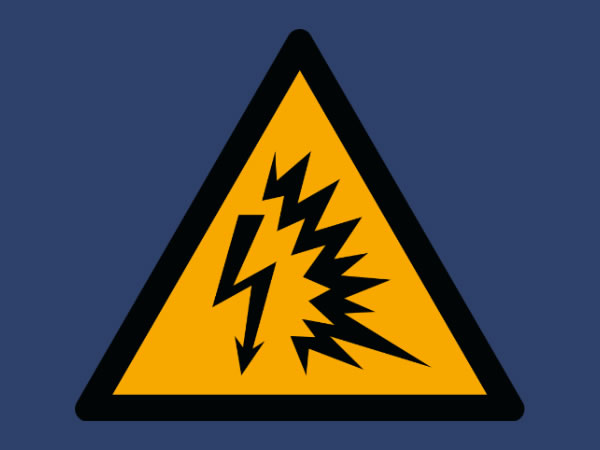
NEIEP’s Electrifying Arc Flash Safety in the Workplace Course
Electricity has become such a key aspect of our lives that as adults, we can sometimes forget about the associated dangers. And for those of us working with electricity, there are few hazards more dangerous in the workplace than the arc flash. The sudden electrical discharge known as an arc flash can cause horrendous injuries and even fatalities.
NEIEP has developed its Arc Flash Safety in the Workplace (CE026) course to provide the much-needed specialized training on the topic of arc flash safety. The robust online continuing education (CE) course provides Elevator Mechanics with the skills and knowledge needed to prevent arc flash accidents and keep their working environments safe.
Understanding the Arc Flash and Associated Dangers
Arc flashes are electrical explosions that take place when a short circuit makes electricity arc through the air between conductors or from conductors to the ground. This event leads to the release of a huge amount of energy in the form of light and heat. The result is an arc flash that can be devastating and has led to burns, hearing damage, and loss of life in the past.
Based on information from the National Fire Protection Association (NFPA), there are five to ten arc flash explosions in electrical equipment in the US on an average workday, and thousands of people are treated for serious arc flash injuries each year. The widespread nature of these injuries and incidents highlights the need for comprehensive safety training on the topic across the country.
NEIEP’s CE026: Arc Flash Safety in the Workplace
NEIEP’s Arc Flash Safety in the Workplace course is self-paced and is divided into four unique units that together cover all vital aspects of arc flash safety and prevention. Units 1-3 finish with quizzes to reinforce knowledge retention and the course as a whole ends with a final exam.
Unit 1: What is an Arc Flash?
Unit 1 is an introduction to the concepts of arc flash and arc flash blast, and also covers the various hazards connected to arc blasts and provides a solid overview of the injuries that can result from electrical incidents like the arc flash. In Unit 1, prevention is emphasized, with participants learning about real-life arc flash injuries and the importance of following general safety protocols as well as those specific to arc flashes.
Unit 2: Electrically Safe Working
CE026’s second unit introduces participants to the world of U.S. electrical safety codes and standards that govern safe working environments. The Occupational Safety and Health Administration (OSHA) describes the details that make for an electrically safe working environment, and many other topics are also touched upon, including the development of a facility electrical safety plan, hazard analysis, training of qualified workers, equipment labeling, job briefings, inspections, recordkeeping, and audits.
Unit 3: Performing Safe Electrical Work
Unit 3 shifts focus to the more practical elements of carrying out safe electrical work. The principle that zero energy equals zero electrical accidents is the jumping-off point, and this unit underscores the importance of always de-energizing equipment before work begins. Participants will learn that this can be done in six steps: identifying all sources of electrical supply, disconnecting active loads, verifying power is off, applying locks and tags, testing for zero voltage, and discharging stored electrical energy.
Unit 4: Personal Protective Equipment (PPE)
The fourth and final unit of NEIEP’s Arc Flash Safety in the Workplace course is all about the proper use and maintenance of personal protective equipment (PPE). All relevant requirements are covered in detail, including the requirements pertaining to clothing and other protective gear such as head, face, chin, neck, hearing, eye, body, hand, arm, and foot protection. Additional topics covered in Unit 4 include lockout/tagout procedures, the use of insulated tools and equipment, meters and voltage detectors, grounding equipment, ground fault circuit interrupters (GFCI), and cords and cables.
The Countless Benefits of Continuing Education
Safety in the workplace must always be the number one priority. NEIEP’s Arc Flash Safety in the Workplace course is user-friendly and accessible, with a clear course layout and featuring the integration of various learning methods that introduce videos, photographs, professional voice overs, and interactive unit quizzes to deliver a comprehensive learning experience containing clear objectives.
NEIEP’s catalog of CE courses is an invaluable resource for Elevator Mechanics and IUEC members can improve their safety skills and contribute to the industry’s most safety-conscious workforce by continuing their education at NEIEP.
